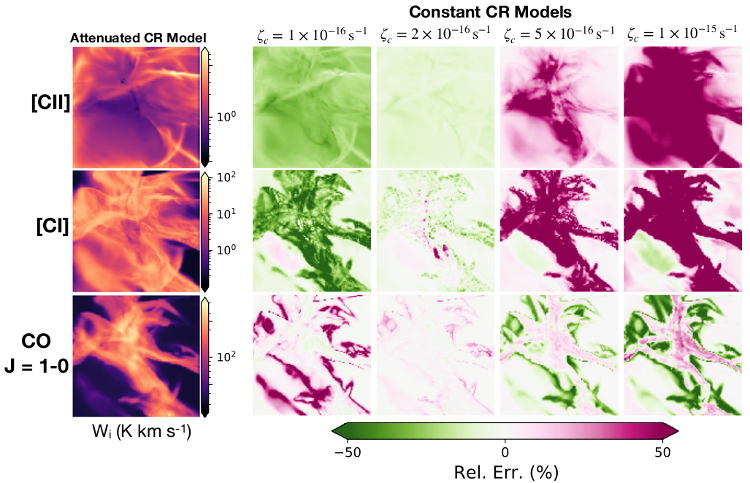| EPoS Contribution |
|
The Impact of Cosmic-Ray Attenuation on the Carbon Cycle Emission in Molecular Clouds
Brandt Gaches UzK, Köln, DE | |
| Emission from carbon cycle species (C+, C, CO) is commonly used to infer gas properties in the interstellar medium but this type of analysis is sensitive to the assumed cosmic-ray ionisation rate. As cosmic rays propagate through molecular clouds, they lose energy, leading to the formation of an ionisation gradient. However, astrochemical models typically utilise a constant ionisation rate. I will present a post-processed chemical model of a simulated diffuse and dense cloud where the chemistry includes a three-dimensional prescription for cosmic-ray attenuation. The clouds exhibit a correlation between the cosmic-ray ionisation rate and gas density, which is explained by an average column density-density relation. The abundances and column densities of carbon cycle species are significantly impacted by the chosen cosmic-ray ionisation rate model: no single constant ionisation rate can reproduce the attenuated cosmic-ray model. I will show that constant ionisation rate models fail to simultaneously reproduce the integrated emission of the lines we consider, and their deviations from a physically derived cosmic-ray attenuation model are too complex to be simply corrected. Finally, I will conclude by providing a number of implementation recommendations for CR ionisation rates in astrochemical models. | |
 | |
| Caption: Ratios of the total integrated flux from different lines of sight for each of the constant cosmic-ray ionisation rate models with respect to the attenuated model for [CII] (left), [CI] (middle), and CO (J = 1−0) (right). The blue line denotes the ratio for the Z projection and the red band denotes the overall spread over the three lines of sight. | |
| Collaborators: T. Bisbas, UzK, DE S. Bialy, UMD, US |
Key publication
Suggested Session: Cosmic Rays |

